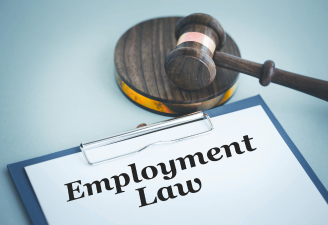During the 1960s the United States experienced an unprecedented time of social revolution. Previously held attitudes of bias against minorities and woman were challenged in many forms. In response to the calls for justice, the Equal Pay Act (1963) and the Civil Rights Act (1964) were both passed and effectively changed the landscape of labor law as we know it today.
While the passage of these laws was monumental, the proceeding years saw challenges to both pieces of legislation that would alter the scope of both. The following are examples of famous employment law cases.
Griggs v. Duke Power Co. (1971)
Widely considered one of the first employment discrimination cases of its kind, Griggs v. Duke Power Co. was heard before the Supreme Court starting in the winter of 1971.
This case was initiated when a collection of employees from the power company brought a class action lawsuit against their employer, Duke Power Company. The employees alleged that the power companies’ policy of requiring a high school diploma and satisfactory scores on a series of tests in order to achieve promotion to higher paying roles was instituted as a ploy to restrict minority employees from certain jobs at the company.
After a series of appeals, the case was brought to the Supreme Court where it was decided that the Civil Rights Act prohibited employers from barring employees from certain positions based on education level or “testing devices” when the position in question did not reasonably require the candidate to possess either a certain level of education or pass an exam.
Meritor Savings Bank v. Vinson (1986)
The case of Meritor Savings Bank v. Vinson is significant in the evolution of employment law due to the resulting ruling of what could constitute gender-based discrimination under the Civil Rights Act.
The plaintiff in this case, Mechelle Vinson, a former employee of Meritor Savings Bank, alleged that she was the victim of repeated sexual harassment by her male supervisor during her time at the bank. Vinson also stated that fear of losing her job drove her to submit to this harassment and therefore created a hostile work environment, which she believed was a form of discrimination and therefore a violation of Title VII of the Civil Rights Act.
Prior to this case, sexual harassment could only be tied to a discrimination claim if sexual harassment resulted in material loss by the employee, such as reduction in wages or termination. Because of this precedent and others like it, the district court that originally heard Vinson’s claim, ruled in favor of the bank.
Once Vinson’s case was appealed and eventually heard before the Supreme Court, it was decided that Title VII was not exclusively intended to cover instances of gender discrimination that led to material loss. Rather, the court ruled that sexual harassment in the workplace which created a hostile environment was a form of gender discrimination and was therefore a violation of Title VII.
Alex Morgan v. United States Soccer Federation (2019)
In March of 2019, 28 players on of U.S. Women’s soccer team filed a lawsuit against the United States Soccer Federation that cited violations under the Equal Pay Act and Title VII of the Civil Rights Act. The suit takes aim at alleged pay disparities and unequal playing conditions between the men and women’s national teams.
In December of 2019, the team reached a settlement with the federation that addresses the disparities in playing conditions, mostly revolving around fields of play, travel accommodations and medical staff availability.
In May of 2020 the equal pay claims in the lawsuit were dismissed in district court but are currently being appealed. The district court judge that dismissed the case contended that the Equal Pay Act does prohibit pay disparity based on sex but cited the two team’s collective bargaining agreements as the reason for the disparity, therefore ruling out the issue of sex. This case, just like those before will likely set a precedent for how employment laws are applied.
Future Employment Law Cases
The last few years have seen many changes for employment laws on both a state and federal level. From remote workers, to changes in parental leave, minimum wages, pay transparency, the raise of AI in the workplace, and much more, it's important for your firm to stay up to date on the current happenings of employment lawsuits. Additionally, having a constant flow of employment law leads can help your firm increase the chances of representing the next big employment lawsuit like the examples above.
eGenerationMarketing has been connecting consumers to attorneys for over a decade and we are ready once again to help firms seeking to help others by broadening their reach to the online employment law lead generation world.
Sourceshttps://www.lexisnexis.com/community/casebrief/p/casebrief-griggs-v-duke-power-co
https://www.lexisnexis.com/community/casebrief/p/casebrief-meritor-sav-bank-fsb-v-vinson
